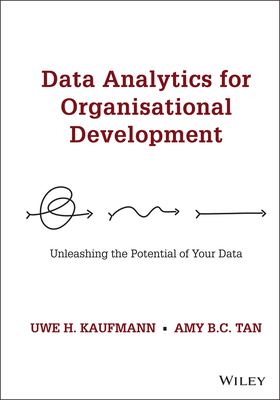Translating Statistics to Make Decisions: A Guide for the Non-Statistician
暫譯: 將統計轉化為決策:非統計學家的指南
Victoria Cox
- 出版商: Apress
- 出版日期: 2017-03-15
- 售價: $1,750
- 貴賓價: 9.5 折 $1,663
- 語言: 英文
- 頁數: 324
- 裝訂: Paperback
- ISBN: 1484222555
- ISBN-13: 9781484222553
-
相關分類:
機率統計學 Probability-and-statistics
海外代購書籍(需單獨結帳)
商品描述
Examine and solve the common misconceptions and fallacies that non-statisticians bring to their interpretation of statistical results. Explore the many pitfalls that non-statisticians―and also statisticians who present statistical reports to non-statisticians―must avoid if statistical results are to be correctly used for evidence-based business decision making.
Victoria Cox, senior statistician at the United Kingdom’s Defence Science and Technology Laboratory (Dstl), distills the lessons of her long experience presenting the actionable results of complex statistical studies to users of widely varying statistical sophistication across many disciplines: from scientists, engineers, analysts, and information technologists to executives, military personnel, project managers, and officials across UK government departments, industry, academia, and international partners.
The author shows how faulty statistical reasoning often undermines the utility of statistical results even among those with advanced technical training. Translating Statistics teaches statistically naive readers enough about statistical questions, methods, models, assumptions, and statements that they will be able to extract the practical message from statistical reports and better constrain what conclusions cannot be made from the results. To non-statisticians with some statistical training, this book offers brush-ups, reminders, and tips for the proper use of statistics and solutions to common errors. To fellow statisticians, the author demonstrates how to present statistical output to non-statisticians to ensure that the statistical results are correctly understood and properly applied to real-world tasks and decisions. The book avoids algebra and proofs, but it does supply code written in R for those readers who are motivated to work out examples.
Pointing along the way to instructive examples of statistics gone awry, Translating Statistics walks readers through the typical course of a statistical study, progressing from the experimental design stage through the data collection process, exploratory data analysis, descriptive statistics, uncertainty, hypothesis testing, statistical modelling and multivariate methods, to graphs suitable for final presentation. The steady focus throughout the book is on how to turn the mathematical artefacts and specialist jargon that are second nature to statisticians into plain English for corporate customers and stakeholders. The final chapter neatly summarizes the book’s lessons and insights for accurately communicating statistical reports to the non-statisticians who commission and act on them.
What You'll Learn
- Recognize and avoid common errors and misconceptions that cause statistical studies to be misinterpreted and misused by non-statisticians in organizational settings
- Gain a practical understanding of the methods, processes, capabilities, and caveats of statistical studies to improve the application of statistical data to business decisions
- See how to code statistical solutions in R
Non-statisticians―including both those with and without an introductory statistics course under their belts―who consume statistical reports in organizational settings, and statisticians who seek guidance for reporting statistical studies to non-statisticians in ways that will be accurately understood and will inform sound business and technical decisions
商品描述(中文翻譯)
檢視並解決非統計學家在解讀統計結果時常見的誤解與謬誤。探索非統計學家,以及向非統計學家呈現統計報告的統計學家,必須避免的許多陷阱,以確保統計結果能正確用於基於證據的商業決策。
維多利亞·考克斯(Victoria Cox),英國國防科學與技術實驗室(Dstl)的高級統計學家,提煉出她在向各種統計素養的用戶呈現複雜統計研究的可行結果方面的豐富經驗:這些用戶包括科學家、工程師、分析師、資訊技術專家、執行官、軍事人員、專案經理,以及來自英國政府部門、產業、學術界和國際夥伴的官員。
作者展示了錯誤的統計推理如何削弱統計結果的效用,即使在那些受過高級技術訓練的人中也是如此。翻譯統計學教導統計學初學者足夠的統計問題、方法、模型、假設和陳述的知識,使他們能夠從統計報告中提取實用信息,並更好地限制從結果中無法得出的結論。對於有一定統計訓練的非統計學家,本書提供了複習、提醒和正確使用統計的技巧,以及常見錯誤的解決方案。對於其他統計學家,作者展示了如何向非統計學家呈現統計輸出,以確保統計結果被正確理解並適當應用於現實世界的任務和決策。本書避免使用代數和證明,但為那些有動力進行範例練習的讀者提供了用R語言編寫的代碼。
在指引讀者了解統計失誤的教學範例的同時,翻譯統計學引導讀者經歷統計研究的典型過程,從實驗設計階段開始,經過數據收集過程、探索性數據分析、描述性統計、不確定性、假設檢驗、統計建模和多變量方法,直到適合最終呈現的圖表。全書始終專注於如何將對統計學家來說是第二天性數學產物和專業術語轉化為企業客戶和利益相關者能理解的簡單英語。最後一章整潔地總結了本書的教訓和見解,以準確地向委託並依賴統計報告的非統計學家傳達。
您將學到什麼
- 識別並避免常見錯誤和誤解,這些錯誤和誤解會導致非統計學家在組織環境中誤解和誤用統計研究
- 獲得對統計研究的方法、過程、能力和注意事項的實用理解,以改善統計數據在商業決策中的應用
- 了解如何在R中編寫統計解決方案
非統計學家——包括那些有和沒有基礎統計課程背景的人——在組織環境中消費統計報告,以及尋求指導以準確理解並能夠為良好的商業和技術決策提供信息的統計學家。























